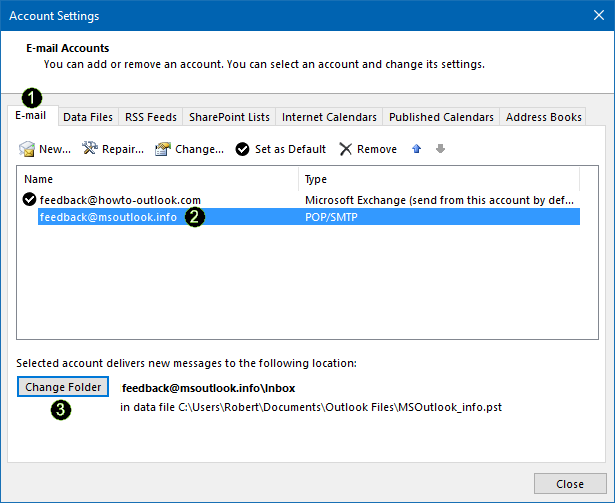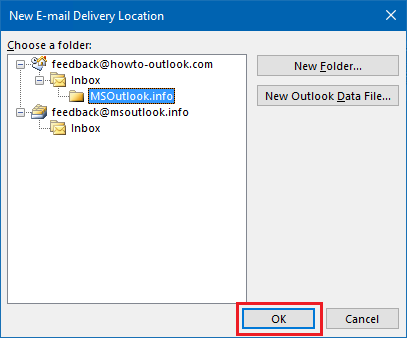How to Merge Inboxes in Outlook 2021, 2019, 2016
Summary: Do you want to organize Outlook Inbox folders? Do you have two or more inbox folders in your account? If so, this post will help you how to merge inboxes in Outlook and manage them professionally. Below are some user queries for the same to make today’s topic more clearer for you.
“I am using Outlook 2016. Somehow I found several inboxes in my Outlook 2016. I would like to combine them into one inbox. Is this possible? Please suggest me a method how do I make all my emails appear in one inbox in Outlook”
“I wonder if there is a way to combine Outlook inboxes for multiple IMAP accounts. I know that if you use POP3, they all come in one inbox, but once I switch to IMAP, I have to click on each account’s inbox separately. Thanks a lot!”
The answer to both questions is Yes. You can combine inboxes in Outlook using a few methods. There are two methods to merge Outlook inboxes of different accounts: Manual and Automated. So you can choose one that fits your requirements to organize Outlook inbox folders successfully.
Reasons to Combine Multiple Inboxes in Outlook
- Merging multiple inboxes into one allows you to manage your emails from a single location.
- When you combine multiple inboxes, it saves time and makes it easier to read, organize.
- It improves your overall email organization, in terms of search, archive messages.
- Maintain the workflow by accessing all your incoming emails from one place.
#1. How to Merge Inboxes in Outlook Manually
Note: Before starting the process, please make a backup of the Outlook data files to avoid data loss or damage problems.
- Open Outlook, click the File menu and then click Account Settings
- In the Account Settings dialog box, select the Email tab
- Select the email account you want to combine.
- In the dialog box, select the Change folder.

- Now select the folder as the destination folder in which a specific message is to be saved.
- These folders are already existing folders like the inbox or a separate folder.
- You can create any other folder like inbox, account 1 or 2, etc.
- After selecting the folder, click OK.

#2. Using Rules To Move Emails To Single Folder
Using rules to move emails to a single folder in Outlook is an effective way to merge inboxes in outlook. This allows you to control the incoming messages by defining specific criteria that automatically sorts emails into a desired folder. By setting up these rules, you can ensure that emails from multiple accounts are merged into one location, making it easier to manage and respond to your messages efficiently.
Step 1. Open MS Outlook
- Launch Microsoft Outlook on your computer.
- Create a New Folder.
- Go to the Folder tab.
- Click New Folder and name it something.
Step 2. Create Rules
- Go to the Home tab button.
- Click Rules > Manage Rules & Alerts.
- Click New Rule and select Apply rule on messages I receive.
- Now, Select conditions to apply to all emails (e.g., “from people or public groups”).
- Set the action to move a copy to the specified folder and choose the “Merged Inbox” folder.
- Repeat this process for each email account.
Apply these rules to move incoming emails from all accounts to the “Merged Inbox“.
#3. Merge Inboxes in Outlook by Manually Moving Emails
- Open MS Outlook into your system.
- Select your emails which you want to move.
- Go to the inbox of the account you want to merge.
- Select all emails (Ctrl + A).
- Right-click on the selected emails.
- Now, Choose Move > Other Folder.
- Select the inbox or folder where you want to merge these emails.
You can Repeat this process for each account’s inbox you want to merge.
Limitations For Using Manual Methods
Manual methods can be time-consuming, complex, and require significant effort to configure and maintain. Performance issues may arise when handling large volumes of emails in a single folder, and incomplete process can lead to sync problems. Here are the challenges faced to merge inboxes in outlook manually:
- Manually moving your emails require significant time and extra effort.
- When we configure rules and setting up unified views can be complex for those who are unfamiliar with outlook advanced features.
- There is a risk of Data loss and time expenditure.
- Merging large volume of emails can slow down overall outlook performance.
Basic Tech
We have gone through all the possible manual approaches to merge Inboxes in outlook step by step. It will efficiently combine outlook inboxes of multiple accounts. But, you need to repeat the same steps for each email account inbox you want to combine. Therefore, the users can use the PST Merger Tool to merge PST files into one without losing original folder structure.
FAQ (Frequently Asked Questions)
Q) How to merge inboxes in Outlook without duplication?
Follow these steps for completing this task:
- Start Merge Outlook PST tool.
- Add the PST files that you wish to combine.
- Choose among 3 merge options.
- Check “skip duplicate items”./li>
- Click “Next” to combine inboxes in Outlook.
Q) What is the best way to organize Outlook Inbox folders?
The best way to organize and manage inboxes in Outlook is to merge them into one. Once merged, you can access multiple Inbox folders in one and avoid data loss issues.
Q) How can I manually combine inboxes in Outlook (multiple accounts)?
- Start Microsoft Outlook and click File menu.
- Click on Account Settings and again choose Account Setting from the dropdown.
- Choose account whose inbox you wish to combine
- Click Change Folder button
- Select another existing folder where you want to save the emails.


